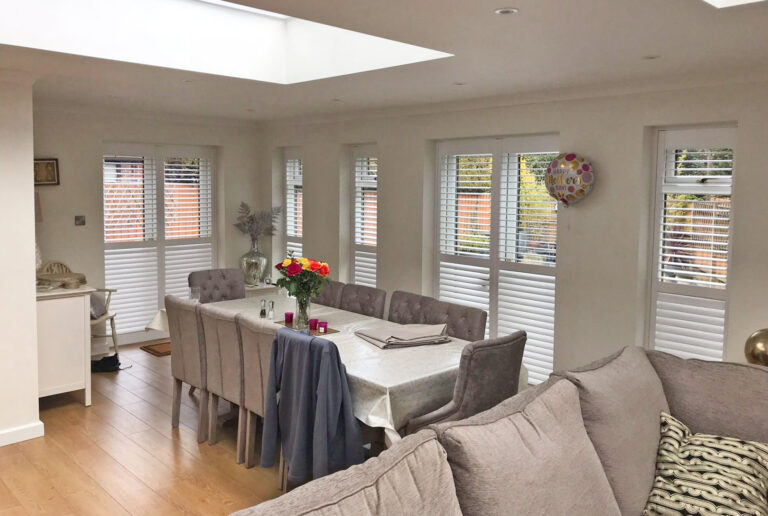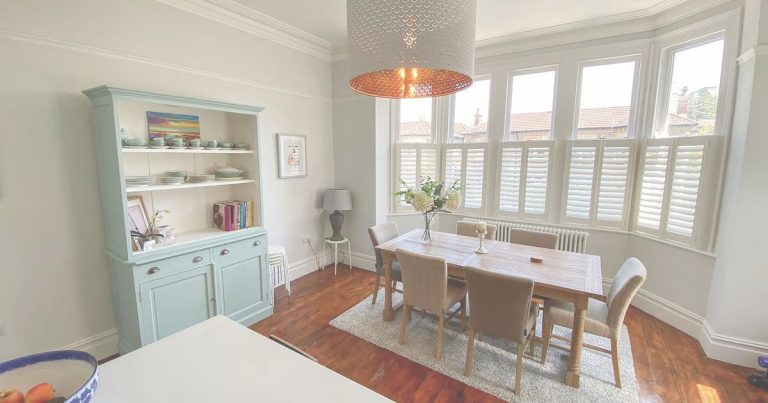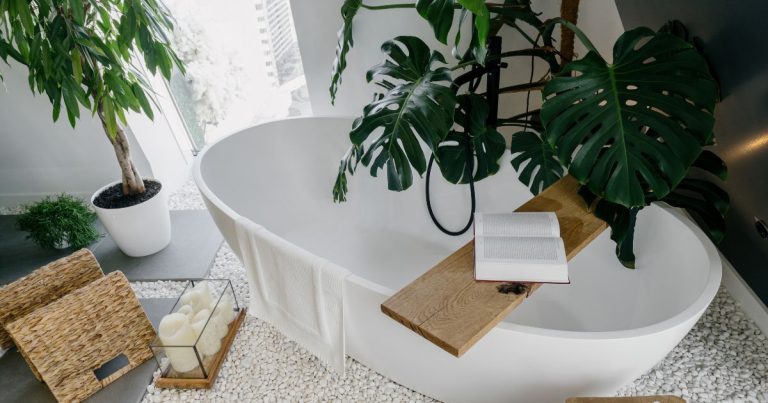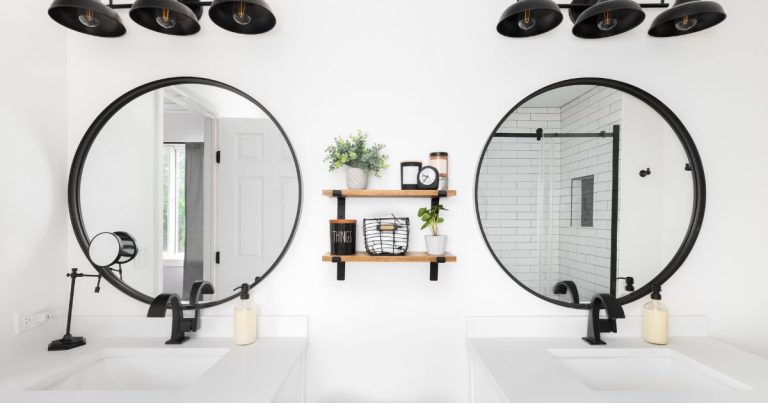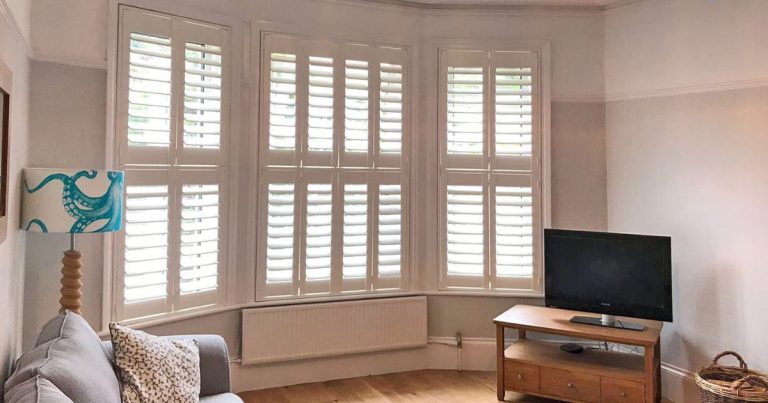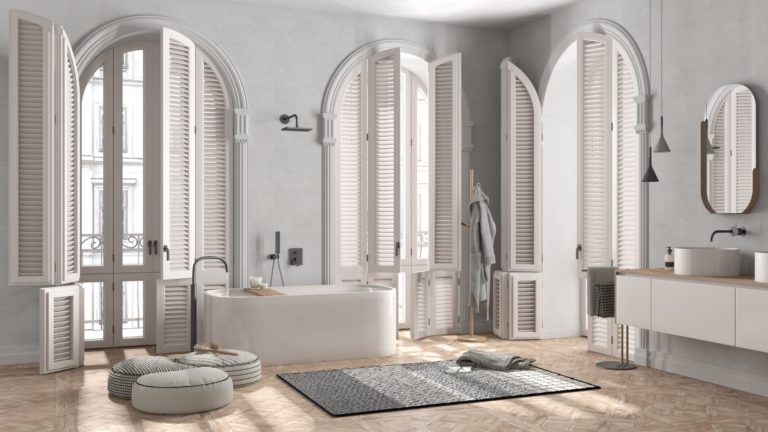Although shutters are one of our best-selling products, we often talk to customers about alternatives to shutters. Ultimately, everyone has their taste in window coverings – and while shutters work for many people, they won’t be the perfect look or function for everyone.
With this in mind, we’ve put together a guide to some of the most popular alternatives to plantation shutters. We’ve also mentioned some alternative shutter materials and styles, just in case you love the idea of shutters but feel like they might not be suitable for what you have in mind!
Quick answer: Numerous shutter alternatives offer the same level of privacy and light control. Popular options include Venetian blinds, vertical blinds, faux-wood blinds, Roman blinds, pleated honeycomb blinds, and roller blinds. If you like shutters but wood isn’t practical, ABS and aluminium shutters are excellent alternatives. Equally, a shutter and shade combination works fantastically if you’d like shutters but need more light control.
What are the best shutter alternatives?
We compiled an extensive list of shutter alternatives so you can find a look ideally suited to your home.es offer the same level of light control.
Venetian blinds
At a glance, Venetian blinds look similar to shutters due to their horizontal slats.
Despite this similar look, Venetian blinds operate differently, rather than being mounted directly to the window frame in their frame. A Venetian blind hangs from a rail at the top of your window.
This makes it possible to lift a Venetian blind completely – something impossible with shutters. If you have a feature window and you’d prefer a more minimal look when your window dressing is open, Venetian blinds are a great choice.
Vertical blinds
Not everyone likes the look of horizontal slats or louvres in a window. So vertical blinds are an excellent alternative if vertical fabric vanes would better match your interior design look.
Again, like Venetian blinds, vertical blinds can be drawn back away from the window completely. Rather than gathering at the top of the window, vertical blinds can be created to gather at one or both sides of your window.
This feature makes them an ideal window blind for use on patio doors – all the benefits of blinds without compromising on the functionality of your doors.
Wood or faux-wood blinds
Many people assume Venetian-style blinds are only available in plain colours – but this isn’t the case. Wooden blinds have the same design as Venetian blinds – but the slats are made of natural hardwood.
Of course, real wood doesn’t respond well to high-moisture environments, so virtually identical faux-wood shutters are available, too, designed to work perfectly in kitchens and bathrooms.
There’s a vast range of natural wood colours available in both styles, too, including:
- Black walnut
- Chestnut
- Driftwood
- Limed white
- Natural oak
- Old teak
- …and many more


Roman shades
Sometimes, the sharp lines of shutters or slatted blinds just don’t work well with a specific interior design look. This can sometimes be the case if you want a soft, fabric-heavy look in your space.
Roman shades are a perfect choice if you’d like an effective way of controlling light and privacy but prefer a softer look. Lengths of plush fabric cascade down your windows when closed, then gather into neat, pleated bunches at the top of your window when fully open.
Since Roman shades are made of fabric, there’s an almost endless choice of materials, colours, and patterns – including custom options that allow for colour matching and custom prints.
Honeycomb shades
Honeycomb shades – also referred to as pleated blinds – are an innovative way of controlling the light entering your room. A pleated – or ‘cellular’ – blind is made of two or more layers of fabric. When closed, these layers of fabric lengthen, creating a honeycomb-shaped cross-section that’s highly efficient at stopping light and preventing heat loss.
Although one of the more technical window dressings available, they look as attractive as the other shutter alternatives on this list.
When open, they’re soft, pleated panels of fabric – and when closed, they gather neatly, disappearing into the top rail where they’re mounted on your window frame.
Roller shades
Roller shades – roller blinds – are a simple but sophisticated way of controlling light and privacy in your space.
When closed, a sheet of durable fabric covers as much or as little of your window as you wish. When it’s time to let the light in, the cord mechanism rolls the fabric onto an internal roller at the top of your window – creating a simple, minimal look.
Roller shades are one of the most cost-effective alternatives to shutters on this list – so they are a perfect choice if you’d like to make your interior design budget go as far as possible.

Different shutter materials and styles
Although this guide focuses on alternatives to shutters, we often talk to people looking for different window coverings. Because they think traditional wooden shutters won’t work in the particular room, they have in mind.
Since this is a common concern, looking at some unique shutter styles that go above and beyond what traditional window shutters offer might be helpful.
ABS shutters
Plantation shutters tend to be made of wood – but wood isn’t a practical option for all settings. In high moisture environments like kitchens, bathrooms, or even swimming pool rooms, wood can be affected by moisture – resulting in warping, misalignment, or a failure to operate correctly.
To combat this problem, most companies that provide traditional shutters can also design and create ABS shutters. ABS is a type of tough plastic – but despite using this different material, ABS shutters look indistinguishable from wooden window shutter alternatives.
If you’ve got a room that experiences high moisture levels and this inspires you to look at alternatives to shutters, you should explore ABS shutters – we can virtually guarantee that you’ll think they look identical!

Aluminium shutters
Although most people consider shutters internal window treatments, this doesn’t have to be the case. Although natural wood shutters are unsuitable for outside use, aluminium shutters are.
If the idea of aluminium shutters conjures images of shop security shutters, you’re in for a surprise. Aluminium shutters are created to mimic the look of interior shutters almost perfectly – so even up close, they look like authentic interior shutters.
One noticeable difference is that aluminium shutters have discreet locks on the outside. This means your external shutters will add extra-tough security to your exterior windows – wherever you decide to use them.
Shutter and shade combination
Although shutters are excellent for light control, they don’t block natural light completely. So you might be put off if you’re looking for an effective room-darkening window solution.
The excellent news is shutters can be combined with honeycomb cellular shades. Also known as ‘pleated shades’ to create a complete room darkening effect. The shade mounts invisibly behind the shutter’s frame and can be pulled down to control light completely.
This is the perfect solution if you’d like to combine the beautiful look of traditional shutters with the light-blocking qualities of pleated blinds.
Would you like to learn more about alternatives to shutters?
If wooden shutters aren’t quite right for your home, there’s hopefully some window dressing inspiration on this list.
Don’t forget the blinds and shutter alternatives we’ve discussed come in various colours, patterns, and materials. If you’d like to learn more about what’s possible with any of these alternatives to shutters, our design team is always happy to help!
Get in touch today!
Why not contact your local Shuttercraft?


 Search
Search

 10 Year Warranty
10 Year Warranty
 Trusted Quality
Trusted Quality
 Made to Measure
Made to Measure
